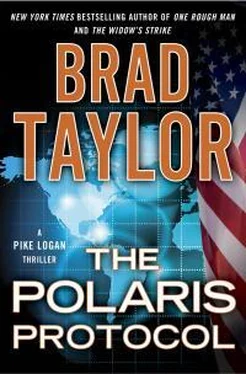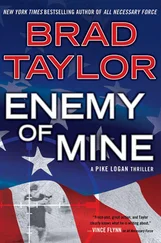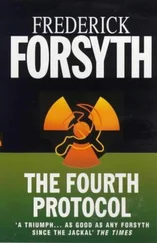“Most of the beacons are in place. The asset is conducting a tour of the facilities and has two left. The problem is the beacons only have a battery life of five days, and the asset will not get the ability to execute a second time. We don’t even know if the munitions will be in the same place a week from now. We’re set to execute in forty-eight hours, right before the beacons begin shutting down, but without GPS we’re not going to be able to. We can’t afford to end up slaughtering a bunch of civilians, or worse, only incinerating half of a target and releasing the other half of the nerve gas on the population.”
What a mess. But it makes this sell a little easier.
Palmer said, “So, now you know. We’ve got a critical operation in play, and it’s time-sensitive. What’s your next step? Do you have anything on Baldy or the Hezbollah guys?”
Kurt said, “No. Nothing. No phone numbers, locations, or anything else, and Mexico City is one of the biggest cities on earth. We could spend ten years there and get nowhere without a lead.”
“So you’re saying we’re screwed? All this time spent on building the capability, all this effort developing a super-secret surgical strike force, and we’re now helpless?”
“No. That’s not what I’m saying. Pike has an idea, but it’s pretty extreme. Like I said, we’re going to need the full council for this decision.”
“Well, spit it out. I’ll determine if the president calls a council meeting.”
“Okay,” Kurt said. “The potential killing of the AQ courier is an edge for us. We know the name he’s using from the recording, which means we can locate him when he flies and take him out.”
“What good will that do? He doesn’t have the protocol. The Hezbollah guys will still get it.”
“You remember the Ghost? The terrorist we captured in Dubai?”
“The guy who tried to kill our Middle East envoy?”
“Yeah. Pike thinks we can use him. Get him involved to help us.”
“What? How the hell can he help? Isn’t he in the Cloud?”
“Yeah, he is. Pike wants to take out the AQ courier and inject the Ghost. Have him go to the meeting with Baldy and the Hezbollah guys. They’ve never met, so they won’t know the difference, and the Ghost can talk terrorism like a master. He can lead us to the meeting, then we take them all out.”
Kurt saw nothing but shock at the idea. Palmer said, “Are you saying you want to use a terrorist we captured to penetrate another terrorist cell?”
Kurt smiled. “Does this meet the criteria for a council meeting? Like I said, it’s out of the box, but in my mind, it’s the best chance we have. Unorthodox, I know. But that’s it.”
“How on earth are you going to get him to agree?”
“That’ll be up to Pike.”
48
The town was small, as American towns go. A square patch outlined by parallel streets and no buildings with more than two stories. Main Street was a throwback to quieter times, with bunting in the windows and every store a stand-alone family affair, sporting names like Cowboy Collectibles and the Blue Pine Motel.
Surrounded on all sides by great swaths of national forest, Panguitch, Utah, was like an island of Americana that someone forgot to tell to grow with the times. A town where everyone still waved when they drove by, whether they knew you or not, and the chosen vehicle was a pickup, preferably a four-by-four dually.
My kind of place, although the damn hybrid rental I was driving wasn’t helping my reputation any.
I was a little shocked that the Oversight Council had given me the go-ahead for my plan. Okay, a lot shocked. They were usually a bunch of handwringers, and I would have thought a request to recruit a terrorist I’d previously captured would be dead on arrival, but they’d said yes.
I’d flown into the closest airport, located in Cedar City, and driven about an hour, looping around the national forests on Interstate 15 and other back roads. Pulling into town, I’d checked into a roadside hotel and then set out to meet the county sheriff.
I’d never been to any of our Cloud locations before and was a little interested in how they worked. When we developed the Taskforce, we had one overarching problem: what to do with the guys we captured. Contrary to popular belief or what the news blabs, we don’t set out to kill everyone. Capture is a much, much better option because it allows us to extract more information that leads to further dismantling of the terrorist threat. Allows us to start painting a picture of the network.
Too often, the intelligence community hears a name or a reference to something and doesn’t know why it’s important. But the terrorists do, so if you can get a thorough debriefing, you can start building the connections, then wait for some bit of chatter to spike interest. You hear the name Abu Bagodonuts, and while you’d otherwise have thrown it away or stored it for future reference, now you have the reference, and you know that ol’ Bagodonuts is a passport forger or whatever, and you can start piecing together the puzzle of what they’re trying to do.
The problem was that we operated outside official channels, so we couldn’t very well march into a New York City courthouse and throw the terrorist on the floor, trussed up and whining, then fly out with a big S on our chests. So we’d come up with our own solution: the Cloud.
Camp X-Ray at Guantánamo Bay would seem to have been the logical choice. I mean, according to the world press and jihadist propaganda, we capture and torture the shit out of terrorists there on a daily basis, without any oversight whatsoever, right? In reality, Gitmo is the most overwatched prison on earth, with a permanent international Red Cross office that has instant access to any and all detainees. Once you go there, you’re pretty much treated like a king—at least as far as prisoners go—with soccer fields, prayer rugs, cable TV, and the ability to bitch about the food and get on a worldwide stage. Make no mistake, once someone’s interned at Gitmo, there’s little information coming out. The only talking the terrorists do at the prison is screaming about imaginary abuses to CNN.
In the early days we could have used a CIA black site in a foreign country, but that went by the wayside with press revelations about “secret prisons” and the enormous backlash from the countries who had agreed to work with us because we promised we could keep a secret. Which we couldn’t.
We kicked around starting our own version, black site lite, as it were, but eventually decided that involving foreign governments was probably not the way to go, considering the Taskforce was illegal under our own laws. They’d want to know how we got the bad guys, which could expose the existence of the Taskforce and create a potential leak that we couldn’t control. So, no new black sites.
Someone finally came up with the idea of using the terrorists’ own techniques against them. While they were all separate entities and sometimes fought among themselves, Islamic radical groups were also interconnected and used those connections to further their goals. Know a guy you went to school with who now works in a bank? Get him to transfer some funds off the books. Have a buddy you met at a training camp from a country you want to enter? Get him to coordinate travel. It worked out very well for them, and it turned out we could do the same thing.
There are a plethora of special operations folks who have served and are now in the private sector, working in a host of legitimate roles, from schoolteacher to insurance salesman. Having risen to the cream of the crop, they all still held a deep patriotic bent and would help if asked, and so we did.
We reached out to a very select few who were now working in law enforcement. The idea was to hide the captured terrorists in plain sight, at a jail in the United States that was run by someone who held a security clearance and had worked in special operations. Someone who could stash the guy, allow interrogations, and ensure his health and welfare was taken care of while keeping it all under the good-ol’-boy hat.
Читать дальше












